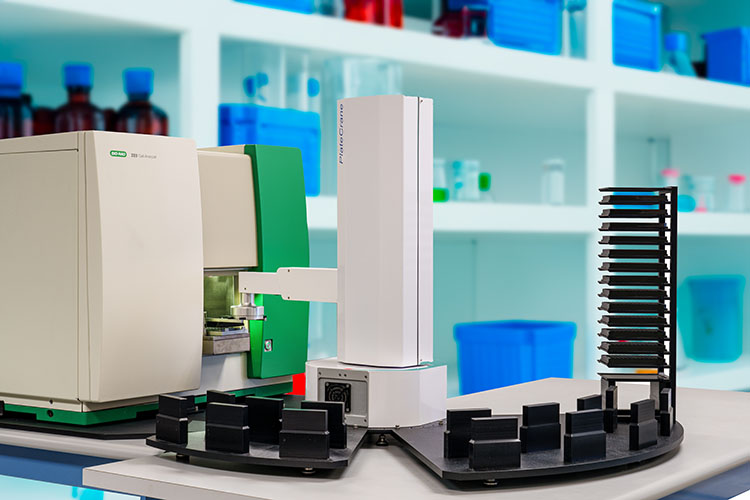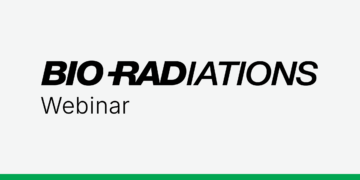The annual international Society for Laboratory Automation and Screening (SLAS) conference is the highlight of the year for scientists in academia, industry, and government focused on leveraging the power of automation to achieve scientific breakthroughs. Here are some highlights of this year’s conference and how Bio-Rad contributed to it.
Automation technology began in the early 1960s, when the first robots were deployed in the automotive industry. Since then, the direction of travel has been a one-way street with automation becoming ever more integral. Automation has been instrumental in improving the quality of production vehicles, while at the same time lowering costs, improving worker safety, and building reliability.
Although laboratory automation is a comparatively small part of the life science industry, the direction of travel is undoubtedly the same. For lab managers who want to get ahead of the curve, SLAS is the place to find out what’s new and innovative in the field.
SLAS 2024 took place in Boston, February 3–7, and was bigger than ever. With an attendance of over 7,500 individuals and 400 exhibitors this year, the conference represents perhaps the most significant meeting for life science lab managers and researchers interested in improving laboratory efficiency through automation.
The meeting featured courses and sessions not only on advances in automation technologies, but also on a diverse range of research areas that stand to benefit from automation, including 3-D cell culture, liquid handling, genome editing, phenotypic screening, data science and AI, high-content imaging, multi-omics, precision medicine, and diagnostics. There was a significant level of participation across pharma, including talks from scientists at AstraZeneca, GSK, Pfizer, Novartis, Moderna, Merck, AbbVie, Sanofi, and Bristol Myers Squibb.
Bio-Rad’s presence was evident in four booths. At its own booth, the company featured two automation-ready instruments, the CFX Opus Real-Time PCR System and the ZE5 Cell Analyzer, along with StarBright Dyes (a unique range of dyes developed using the ZE5 Cell Analyzer to offer superior flow cytometry performance). These same Bio-Rad instruments were also displayed integrated with compatible automation systems in three other exhibitor booths: HighRes Biosolutions and Hudson Robotics both featured the ZE5 Cell Analyzer and Peak Analysis and Automation (PAA) showcased the CFX Opus System connected to their KX-2 robot arm.
PAA’s KX-2 robot was also in the Bio-Rad booth, connected to the ZE5 Cell Analyzer. With its demonstrations in multiple booths, the ZE5 Cell Analyzer was the most-seen flow cytometer at SLAS.

The ZE5 Cell Analyzer from Bio-Rad automated with the PlateCrane EX Robotic Arm Microplate Handler and SoftLinx Lab Automation Software from Hudson Robotics.
Additionally, Bio-Rad hosted an exhibitor tutorial, “What, Where, When, and How to Automate Flow Cytometry,” in which Brian O’ Sullivan, Senior Vice President of Commercial at HighRes Biosolutions, offered his insight into automating flow cytometry from an integrator’s perspective. Tim Ashlin, Principal Investigator at GSK, also shared his experience in automating flow cytometry, giving examples of projects where automation has been used in conjunction with the ZE5 Cell Analyzer and GSK’s future ambitions for automating their screening workflows.
Veronika Kortisova-Descamps, Marketing Manager for Cell Biology and a Bio-Rad representative at SLAS 2024, said, “We are proud to work with a diverse range of automation providers to give customers who require automated flow cytometry access to the best possible solution to their needs. I think it’s a testament to how well we work alongside automation providers that so many of them wanted to collaborate with us for this show. I also think it demonstrates that the ZE5 Cell Analyzer is the best instrument available for automated flow cytometry.”
The ZE5 Cell Analyzer is an ideal flow cytometer for screening applications due to its ability to combine high-dimensional analysis with high throughput. It also features a flexible application programming interface (API) that gives integrators access to a range of advanced features including automated fault recovery and automatic cleaning.
Referring to the pairing of the CFX Opus Real-Time PCR System with PAA’s KX-2 robot, Jennifer Placek, Bio-Rad Product Manager for Gene Expression, commented, “SLAS is a great meeting and we were really pleased to have the system displayed in the PAA booth. Bio-Rad is a leading provider of gene expression analysis instruments and we have been working hard recently to show customers that the quality and reliability of these instruments can be leveraged by anyone considering automating their PCR workflow”.
CFX Real-Time PCR Systems are powerful and flexible instruments, featuring 2–5 color multiplexing, advanced optical technology, and precise thermal gradient temperature control. Bio-Rad qPCR systems deliver sensitive, reliable detection of both singleplex and multiplex real-time PCR reactions and CFX Maestro Software provides superior data collection, statistical analysis, and data visualization capabilities. The systems also feature a CFX Maestro API package that allows for integration with automation platforms.
Although automation may not have reached the level of dominance in labs that it has in the automotive industry, the advantages it offers in terms of throughput, reproducibility, and efficiency make it an important part of improving how we do life science research in the 21st century — especially in the fields of screening and drug discovery. Bio-Rad will continue to be at the forefront of providing instruments and reagents ideal for automated workflows.
Visit our website to see how Bio-Rad instruments can improve high-throughput screening workflows, and join us next year at SLAS 2025, January 25–29, at the San Diego Convention Center and see how we can help you get the most out of your automation project.




